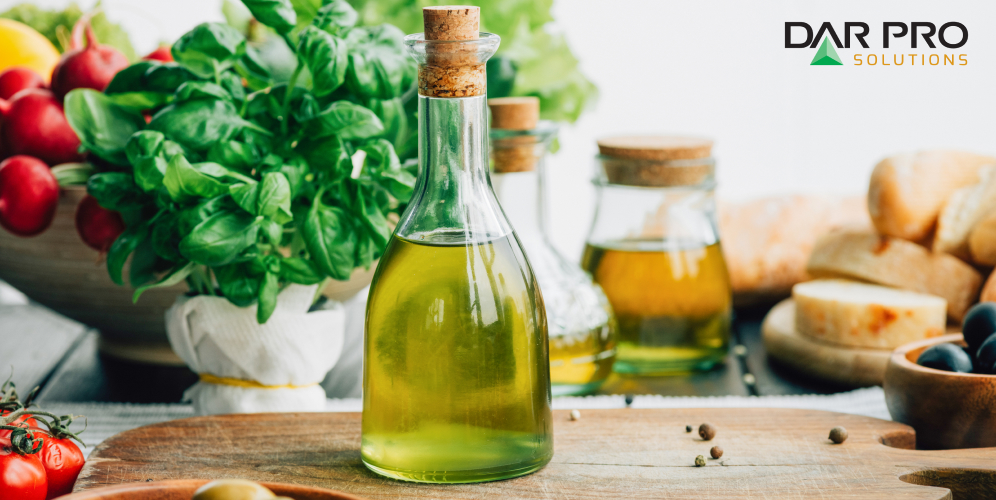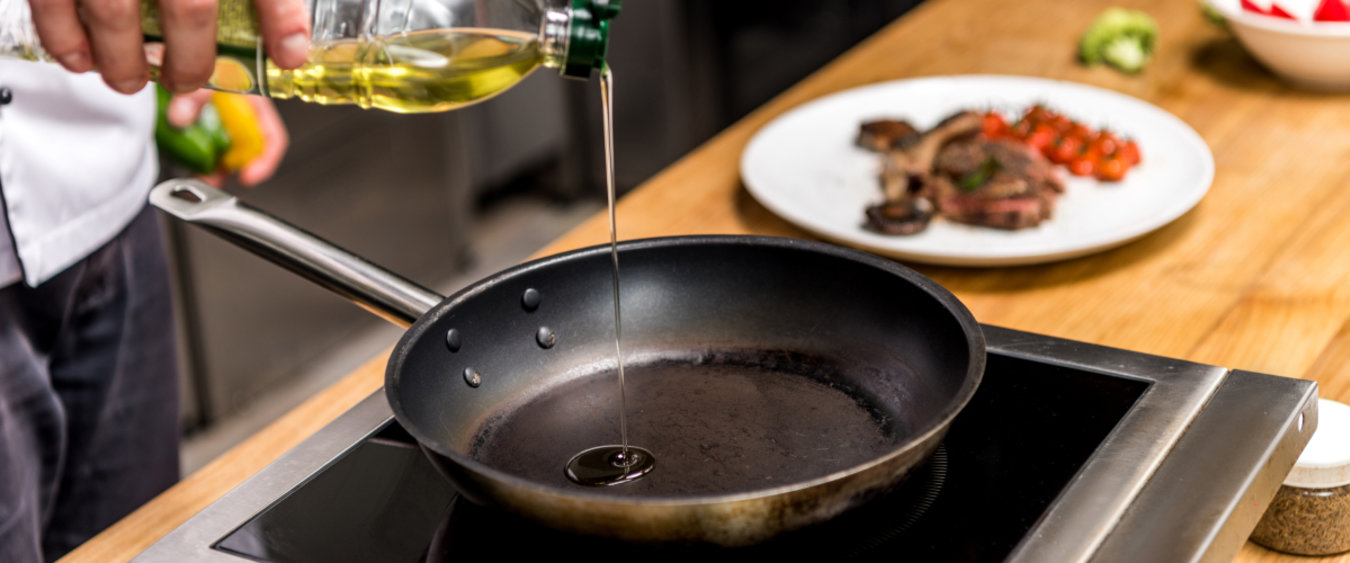What Are The Differences Between Frying Oils?
When browsing for the right type of deep frying oil, you’ll want to keep three predominant factors in mind:
Smoke point
Taste
Price
These are the three factors that will help you decide which oil is best for your deep-frying needs.
Smoke Point
An oil's smoke point is the temperature at which it starts to break down and burn. It’s important to pay attention to the smoke point because when oil begins to break apart and smoke, it adversely affects the flavor of your food. If you try using a low-smoke point oil for a high-temperature recipe, you’re going to have subpar outcomes.
Oil with a high smoke point is considered more stable than oils with a low smoke point. Stable oils that are great for deep frying include:
Peanut
Canola
Vegetable
Each of these has a smoke point north of 400°F. Most deep frying occurs between 350°F and 400°F. That makes these oils optimal for deep frying.

Oils with a low smoke point include
Coconut
Olive
Some corn oils
These oils will not fare well in a deep fryer if you tend to fry in large quantities. Stay away from them.
Taste
All oils taste different. And when you deep fry, that taste will leach into your final product.
Some oils have a strong flavor while others are considered neutral. For example, olive oil has a strong and distinct taste. Because of that, it’s often used in dishes to have the oil heavily dictate the food’s taste.
On the other hand, peanut, canola, and corn oil are all neutral-flavored oils. This makes them hard to taste in the food’s final product.
Taste comes down to what you want to achieve from your dishes. Neutral flavored oils make better dishes that want to highlight the original taste of the ingredients. If you want to add some flavor via oil, you can choose oils with a distinct taste.
Price
Inventory is expensive. As the push for petroleum fuel alternatives like biofuel intensifies, the price of cooking oil has also increased.
A quick glance at market prices will show that peanut oil tends to be more expensive than other oils like canola. Canola and vegetable oil tend to be closer in price. Peanut, canola, and peanut oil are considered the three cheapest deep-frying oils you can choose.
Other oils like grapeseed and olive oils are much more expensive but can create some interesting dishes. Think about the dishes you will be making most often and consider the price of oil for those recipes.
The 4 Best Oils For Frying
Choosing the best oil for frying based on your menu, clientele, and processes can help your restaurant save money while sizzling its way to culinary greatness. Here are the 4 best fryer oils and what makes each of them so special.
1. Best Overall Frying Oil: Vegetable Oil
The term “vegetable oil” isn’t specific - and that’s for good reason. The ingredients of vegetable oil consist of several different oils that have been emulsified together to create a low-cost oil blend.
This mixture usually contains soybean, corn, sunflower, canola, and palm oil. Vegetable oil has a smoke point of 400°F making it a stable, neutral tasting, and affordable, option for frying.
Vegetable oil is a solid candidate for any deep-frying need.

2. Most Versatile Frying Oil: Peanut Oil
Peanut oil is the top choice for commercial kitchen fryers. The ideal traits of peanut oil include:
Affordability: Its price point rivals the price of vegetable oil
A high smoke point: Peanut oil has a surprisingly high smoke point of 450°F.
A neutral flavor: Peanut oil has little to no flavor which means it can be used for many fried dishes
Depending on how Peanut oil is used it can also stay fresh in your fryer for longer than other options. All of these reasons make Peanut oil one of the most versatile oil for frying.
One caveat. A large portion of the earth’s population is allergic to peanuts. That includes peanut oil. Using peanut oil for your commercial frying needs could exclude some patrons from enjoying your food. Consider your target audience before choosing to fry with peanut oil.
Cheapest Oil for high Heat: Corn Oil
Peanut oil can withstand high temperatures, but its allergen drawbacks make it difficult for some restaurants to use.
A great alternative to peanut oil is corn oil. It boasts the same smoke point of 450°F, but it’s less likely to be an allergen issue.
Corn oil is a great option for popcorn or fries because it does leave behind a slight flavor of corn. However, its price is similar and often less than peanut-based oils.

4. Cheapest Frying Oil Overall: Canola Oil
When comparing prices, canola oil comes out on top. It does offer a slightly lower smoke point than other oils, but at 400°F it’s hard to complain.
Canola oil also features a very neutral flavor that guarantees several foods can be cooked in it.
There’s not much else to say about canola oil. There’s a reason it’s a staple in so many restaurants - it’s the most “bang-for-your-buck” option out there.
Another Option: Blending Fryer Oil
Soybean oil is a popular choice for deep frying on its own, but when blended with peanut oil or canola oil, it becomes a particularly useful choice.
When peanut (or canola) and soybean oil are blended you end up with an oil that has a decently high smoke point, but a slightly cheaper price thanks to the soybean oil. A blend of canola and soybean oil will greatly decrease the cost of frying oil and will reduce flavor transfer thanks to the collective composition of those two oils.
You can always try various combinations to see what works best for you, but you should always try these things in smaller batches first.
Choosing The Best Oil Option For Your Commercial Kitchen
While it’s easy enough to understand the merits of each frying oil, it’s hard to know which one you should invest your time and money into.
The first thing to consider should be the smoke point. If you plan on making dishes that require a high smoke point then you should choose either corn or peanut oil. And if you’re worried about allergens, then corn oil is a great option for you.
If you’re looking for nothing fancy, you can’t go wrong with canola oil.
Don’t Forget About How You’ll Deal With Used Oil
Used cooking oil is a harmful waste product created when cooking oil becomes spent through use. If it gets poured down the drain it can clog pipes, cause sewage issues, and leave you with hefty fines. Putting used cooking oil in a dumpster is also unsafe because it leaches into the soil and causes environmental harm as well as leaves you with hefty fines
Before opening your kitchen, you need to have a plan for how you’re going to dispose of used cooking oil. The best way to do this is to partner with a full-service used cooking oil collection company.
Dar Pro Solutions equips businesses with state-of-the-art automated used cooking oil containers. We’ll also set up a pickup schedule that matches your restaurant’s used cooking oil output. Worry less about your used cooking oil and let us handle it.
Contact our sales team to start the process of getting used cooking oil equipment and a schedule that matches your business's unique needs.
How To Dispose of Frying Oil With DAR PRO Solutions
DAR PRO Solutions is committed to providing a seamless and hassle-free used cooking used cooking oil disposal service. With plenty of options for grease trap cleaning, pickup services, and more, we’re sure to have the perfect solution for your needs. Instead of wondering what to do with your used cooking oil, let us take care of it. Call us 24/7/365 at 855-DAR-PRO1 (855-327-7761).
Contact Sales
For customer service inquiries call our toll free number (855) 327-7761
By submitting this form I agree to the privacy policy including the usage of contact details to contact me for marketing purposes.
10/15/2021
